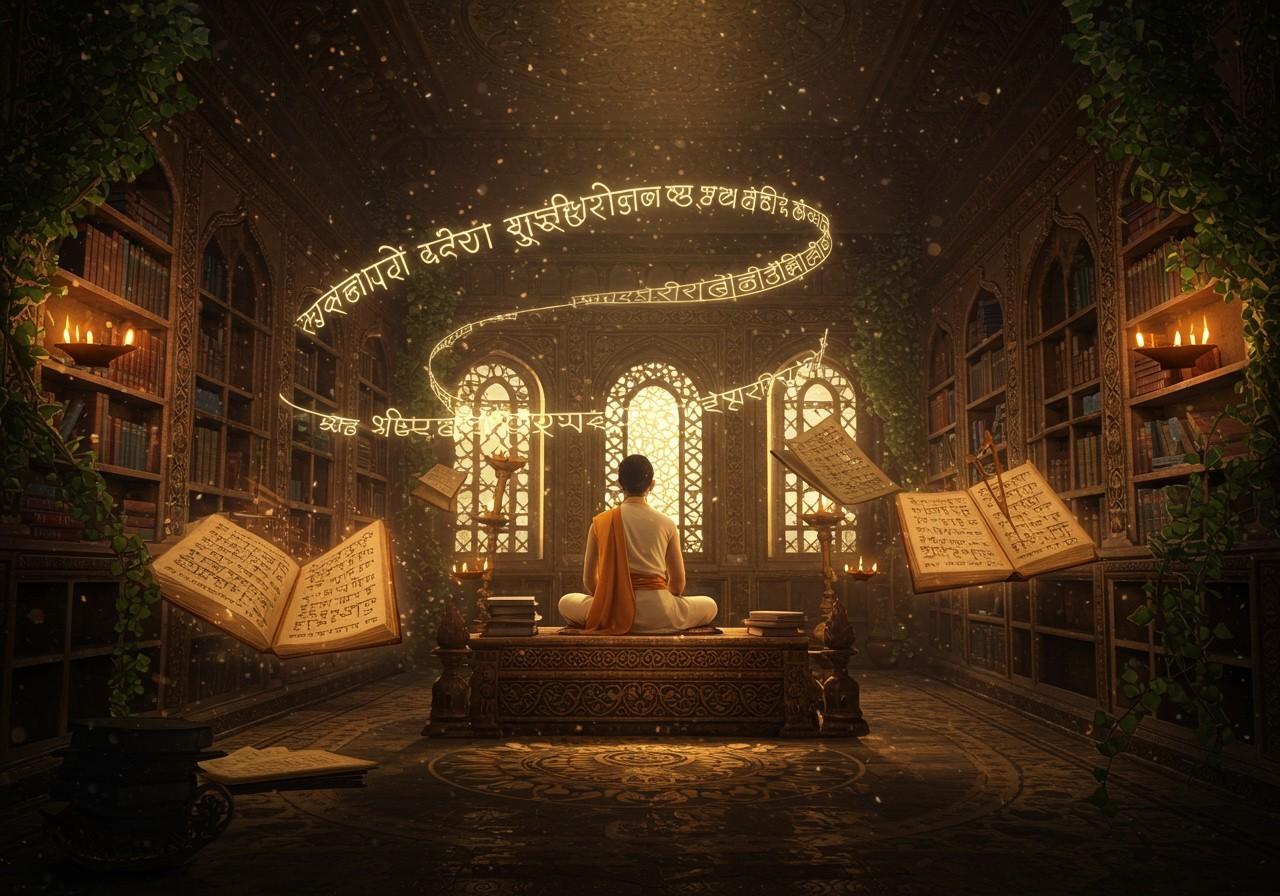
Prakrit Bhasha, often overshadowed by Sanskrit, holds a significant place in Indian history and culture. This ancient language, flourishing between the 5th century BCE and the 12th century CE, boasts a rich literary tradition and has deeply influenced modern Indian languages. Let’s delve into the origins, evolution, and literary importance of Prakrit Bhasha.
History and Evolution
Prakrit Bhasha evolved from Sanskrit during the Vedic and classical periods, becoming the common tongue due to its simplicity. Jainism and Buddhism played key roles in its propagation. Its various regional forms, including Maharashtri, Shauraseni, Magadhi, and Ardhamagadhi, demonstrate its widespread use. Prakrit thrived under royal patronage and scholarly support, holding a prominent position in ancient Indian courts. Over time, it gradually gave way to other emerging regional languages.
Literary Contributions and Texts
Prakrit literature encompasses both religious and secular works, including the Jain Agamas, Buddhist Tripitaka, and the Gathasaptashati, a collection of Prakrit poems. Renowned poets and playwrights like Hala, Ashvaghosha, and Kalidasa enriched Prakrit literature. Early Indian drama, particularly works by Bhasa and Shudraka, frequently employed Prakrit, especially for the dialogues of commoners and women. The preservation of Prakrit manuscripts over centuries has allowed us to appreciate its unique stylistic elements and themes.
Influence on Modern Indian Languages
Prakrit Bhasha has profoundly impacted modern Indian languages such as Hindi, Marathi, Gujarati, and Bengali. Its influence can be seen in grammatical structures, vocabulary, and literary styles. Ongoing efforts to preserve Prakrit heritage contribute to the understanding of regional dialects and vernacular traditions.
Prakrit Bhasha in Hindi
Hindi speakers find a particular resonance with Prakrit Bhasha due to their close historical connections. Many Hindi words have etymological roots in Prakrit. Translated inscriptions and specific teaching approaches in Hindi-speaking regions further highlight this connection. Prakrit studies continue to be integrated into modern Hindi literature and academia, with contemporary authors drawing inspiration from Prakrit themes.
Cultural Significance and Legacy
Prakrit Bhasha stands as a cultural treasure, reflecting ancient India’s linguistic diversity. It plays a vital role in preserving religious philosophies, especially Jainism and Buddhism. Prakrit literature vividly portrays everyday life, customs, and traditions of ancient India, offering valuable insights into the past. Artistic expressions like classical music and dance draw inspiration from Prakrit themes, and cultural festivals celebrate its rich heritage, fostering cultural identity among Indian communities. Modern scholars and organizations are actively involved in studying and preserving Prakrit, ensuring its legacy endures.
FAQs on Prakrit Bhasha
What is Prakrit Bhasha? Prakrit Bhasha is a group of Middle Indo-Aryan languages used in the Indian subcontinent from around the 5th century BCE to the 12th century CE. These languages were closely related to Sanskrit but simpler in structure, serving as the vernacular languages of various regions.
What is the significance of Prakrit Bhasha? Prakrit Bhasha holds significant historical and literary value. It played a crucial role in the development of Indo-Aryan languages, served as the language of important religious and secular texts, and provides invaluable insights into ancient Indian culture and literature.
How is Prakrit Bhasha different from Sanskrit? While related to Sanskrit, Prakrit languages differ in several ways. Prakrit languages have simpler grammar, vocabulary, and phonology compared to the more complex and formal Sanskrit. They also exhibit variations in pronunciation and sentence structure.
Poojn.in: Supporting Your Exploration of Prakrit Culture
At Poojn.in, we recognize the profound connection between language, culture, and spirituality. As you delve into the world of Prakrit Bhasha, we offer a range of products to support your journey:
- Haritaki (Harad): This sacred ingredient, frequently mentioned in Prakrit texts, is available in various forms for your rituals and wellness practices.
- Bel Mala: Used in prayers and meditation, this traditional mala can enhance your spiritual practice.
- Pure Camphor: An essential element in many Hindu rituals, our pure camphor ensures authenticity in your practices.
Explore our complete collection at www.poojn.in and discover a wide range of products to enrich your spiritual journey.
Conclusion
Prakrit Bhasha’s historical, literary, and cultural significance makes it a captivating subject. As a vital link to our past, it inspires future generations. By understanding and preserving Prakrit Bhasha, we honor our heritage and enrich our cultural understanding.
Explore related articles on Indian culture and spirituality on Poojn.in:
- Ramayana’s Impact on Indian Art and Literature
- Ramayana’s Influence on Hindu Spirituality
- Chhinnamasta Devi: Rajrappa’s Powerful Goddess


